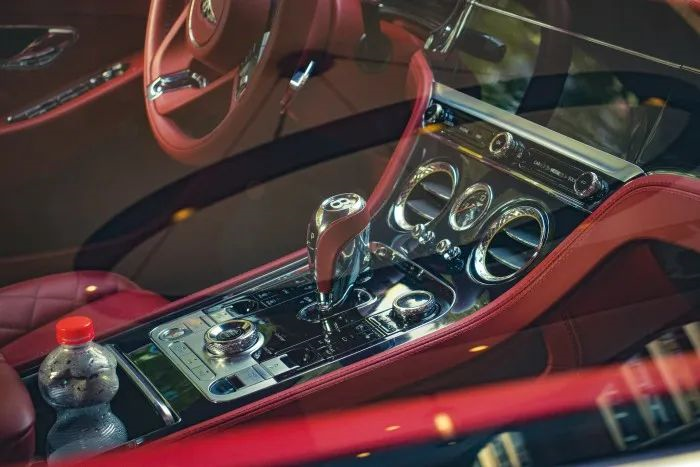Author: Mr.Yu
What’s Your Opinion on the 2022 Chengdu Auto Show?
To be honest, the 2022 Chengdu Auto Show, which ended early, did not bring us many surprises.
The Beijing Auto Show, which has been forgotten by time, has become a thorn in the side of car companies. Instead of making a grand appearance at the top auto shows and stunning the audience, car companies have been releasing their new products in their own ways and rhythms during the past six months.
After experiencing dozens of car cabins in the exhibition hall that turned into hot yoga due to limited air conditioning, we found that some of our previous predictions had come true. So, what’s the next trend?
Screens That Roll Up and Take Flight: More, Expensive, Better
A few years ago at auto shows, the entertainment screens in the passenger seat were still rare items only found in a few new models making a splash.
But in 2022, screens of all shapes and sizes with various uses have crossed historical, brand, origin, and positioning barriers, and have been racing each other into car cabins, as if mocking the stereotype of “smart cars are nothing more than iPads in a car”.
Broadly speaking, under the banner of the “technology equity” concept, the demand for passengers outside the main driver in various scenarios has been unprecedentedly valued. Enjoying audio-visual content through screens is just one of them.
Narrowly speaking, without considering the industry’s jargon, screens are also the easiest interface for experiencing and conveying the feel of the car.
A few months ago, people were passionately discussing on social media about whether He XPeng’s statement “I firmly oppose having too many screens in a car” was aimed at Ideal L9.
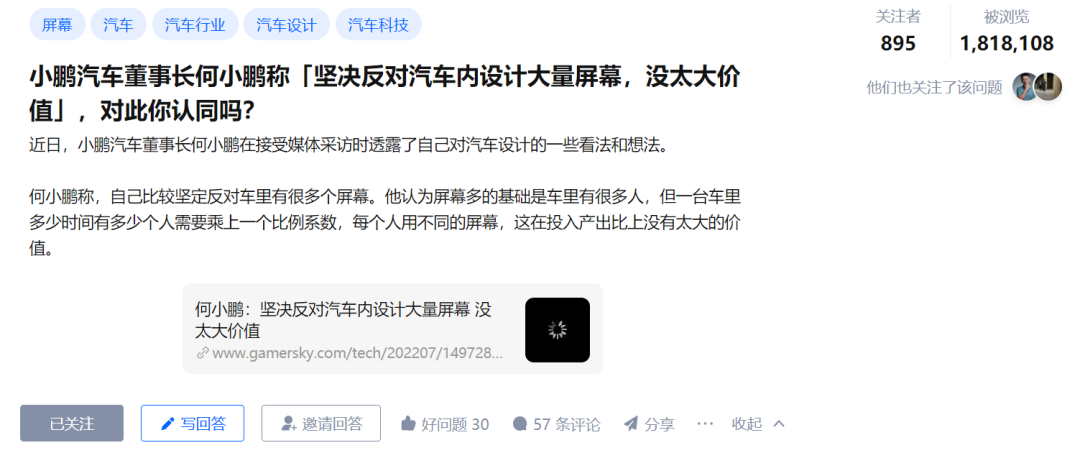
But as soon as XPeng’s new car G9 arrived, and the number of screens increased unprecedentedly to three, the standards of more and less were only determined by the leader’s decisions.
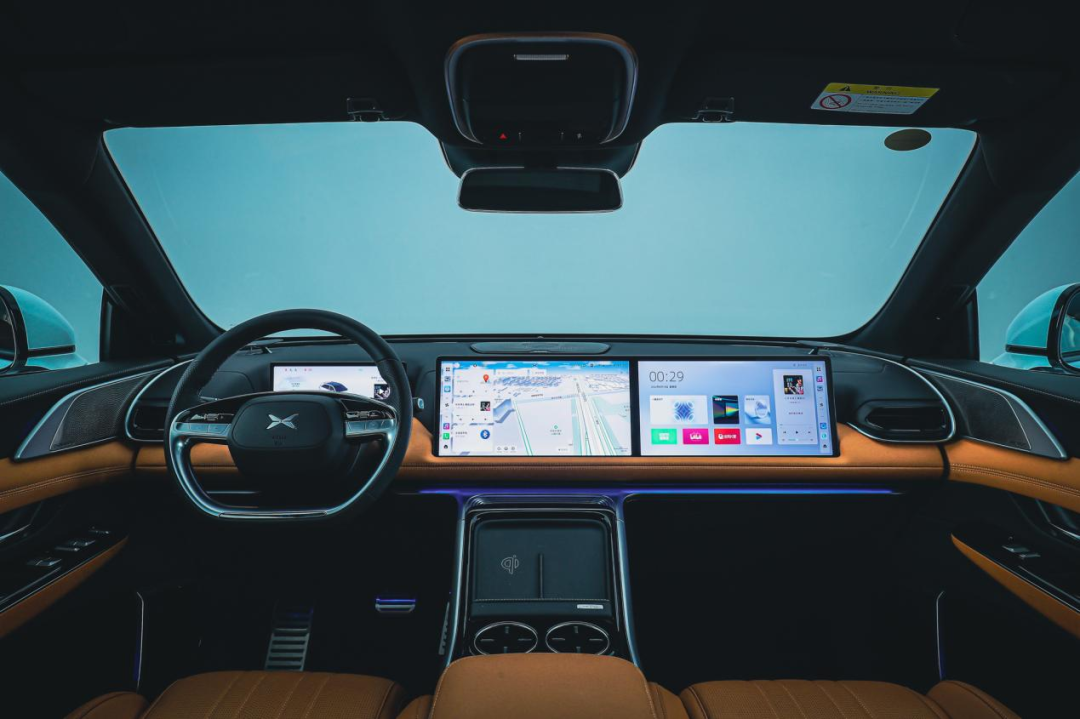
In addition to the rear entertainment screen that caused a huge topic flow for the Ideal L9 when it was first released, the layout of two 3K screens in the front row compared to the XPeng G9 can’t be said to be exactly the same, but only similar.
The XPeng G9 is not the only new car with more than two screens. Other new cars such as the FIFI R7 and Wei’s Dream have also adopted the multi-screen philosophy.](https://42how-com.oss-cn-beijing.aliyuncs.com/article/image_20220908210700.png)
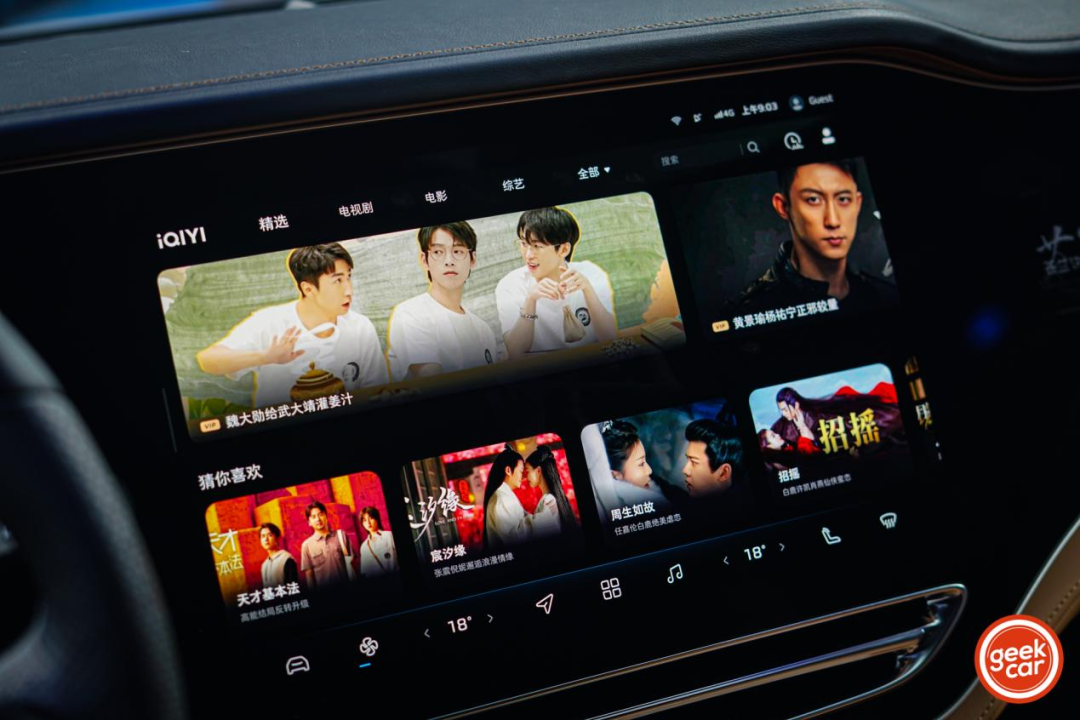
When it comes to the RisingAuto R7, it has been given the moniker “Screen Emperor” among car enthusiasts. The 15.05-inch flexible AMOLED ultra-clear center screen boasts a 2.5K resolution, 100% NTSC high color gamut, 60Hz refresh rate, 200PPI pixel density, and 1000000:1 high contrast ratio… Yes, this copy isn’t promoting a smartphone, but the data of the RisingAuto R7 center screen. The brand has a considerable degree of confidence, blatantly taking the screen and specifications out for separate mention.
Perhaps feeling unsatisfied with the 43-inch wide-color tricolor screen, the RisingAuto R7 product team has designed a unique feature integration with Huawei’s visual enhancement AR-HUD system, which can play video content while parked. Not only does this feature showcase the team’s ingenuity, but it also imposes a high demand on the AR-HUD’s display brightness and other core indicators.
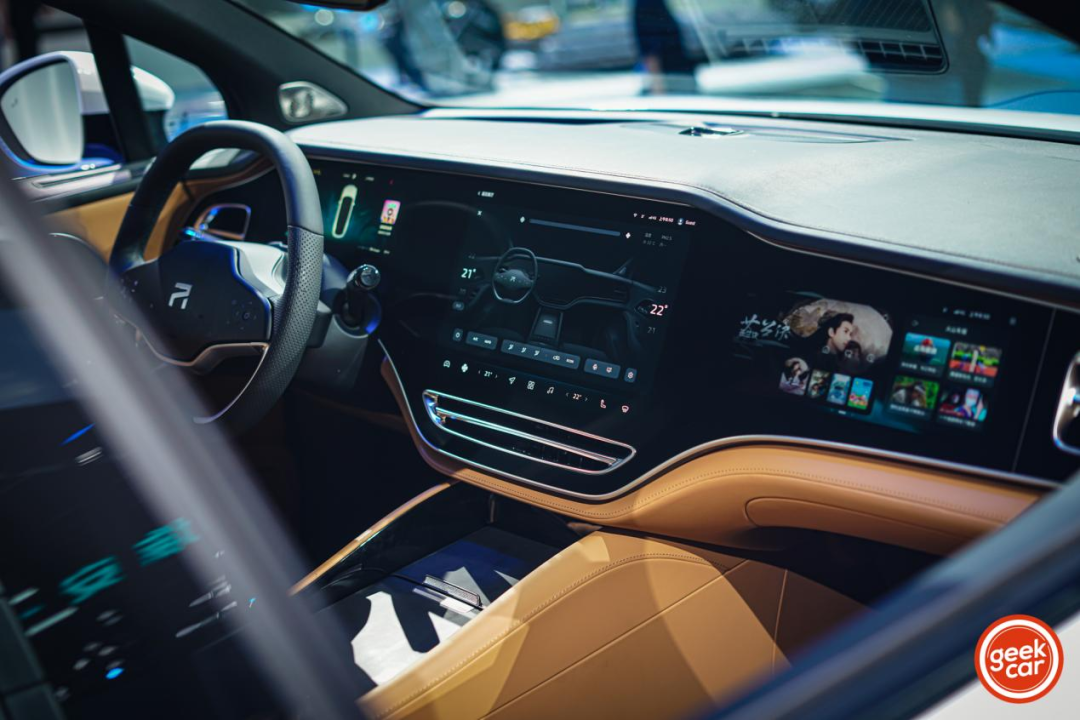
Let’s go back to the XPeng G9. Feeling that a mere screen isn’t enough, XPeng has packaged the concept of the “Xopera XPeng Music Hall” for the G9. Combining 28 acoustic units in the cockpit and working in synergy with the software and hardware, users can enjoy a more immersive 5D viewing experience with coordinated seat, ambient lighting, air conditioning, and fragrance.
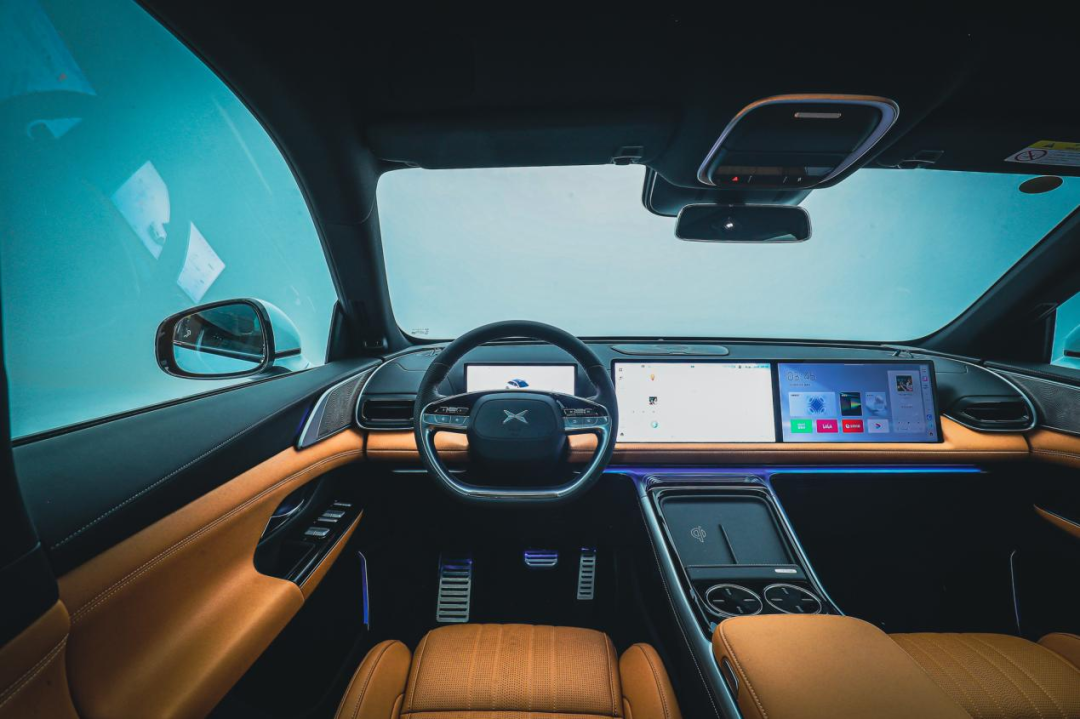
Coincidentally, the NIO Air AR Glasses, jointly developed by NIO and AR start-up company Nreal, were recently added to the NIO Life store. These sunglasses-sized AR glasses can project a high-definition giant screen of 130 inches equivalent from a distance of four meters. Although the specific effects are yet to be experienced, at least it can be seen that NIO, which has been relatively moderate in the number of in-car screens, has not given up the opportunity to surpass its rivals.
 The Battle of Screens in the cabin is expected to last for a considerable period of time, focused on the following points:
The Battle of Screens in the cabin is expected to last for a considerable period of time, focused on the following points:
- In a certain sense, as software brings less and less novelty to the experience, the tendency to focus on the quality of hardware like screens will become rampant.
- Brands will compete on screen specs as a basic promotional operation, as screens are the most direct product feature indicative of improved experience, with the development path likely mirroring that of the intelligent phone market over the past two years
- Based on the above two points, consumers’ awareness and perception of screen quality and their demands will increase to a certain extent, although it remains to be seen how much it will influence purchasing decisions.
- Based on the third point, how to truly make the most of better screens and tell good stories will become an important issue for car product managers, and there may even be some features that showcase screen brilliance in the coming period.
- The “screen” does not necessarily have to be limited to traditional screens, with non-physical media such as HUD projections and AR/VR glasses being more prevalent in cabins.

Intelligent Voice: Capability Release, Demand Expansion
Compared with the aggressive ascent of screens, the advancement of intelligent voice is more conservative.
Do you remember seeing a report in the second half of 2020 where XPeng demonstrated a highly precise language assistant “Xiaopu” on the P7, who opened the car window “by 10%” and progressed a song “by 20 seconds”? This left a lasting impression.
More recently, in “AI Voice (One)– Not Just Disliked Because It Sounds Like an Idiot, ” we’ve written about some of the pain points of intelligent voices. The senior, experienced product manager Mr. K I talked to noted that the value of some voice features may be yet to come to light or be understood, such as touch-and-say.
The story of intelligent voice is both easy to and difficult to tell, but we have no choice but to continue to work at it.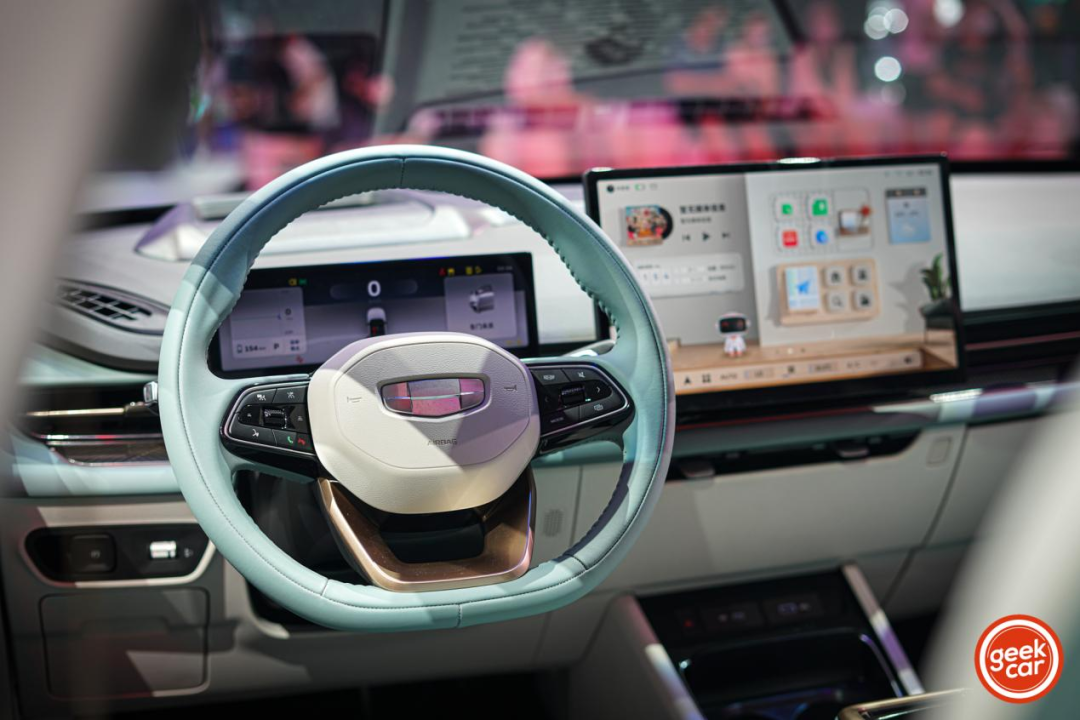
The term “intelligent voice” is easily associated with a sense of technology, which also has a strong bond with new energy in public perception.
The Wuling KiWi EV, a micro electric car, not only packs L2 level assisted driving and automatic parking into its small body, but also supports continuous conversation, single-sentence multi-instruction, and wake-up-free voice capabilities in terms of interaction. Wuling, which is famous for the slogan “build what the people need,”has given everything that the people need for intelligence.
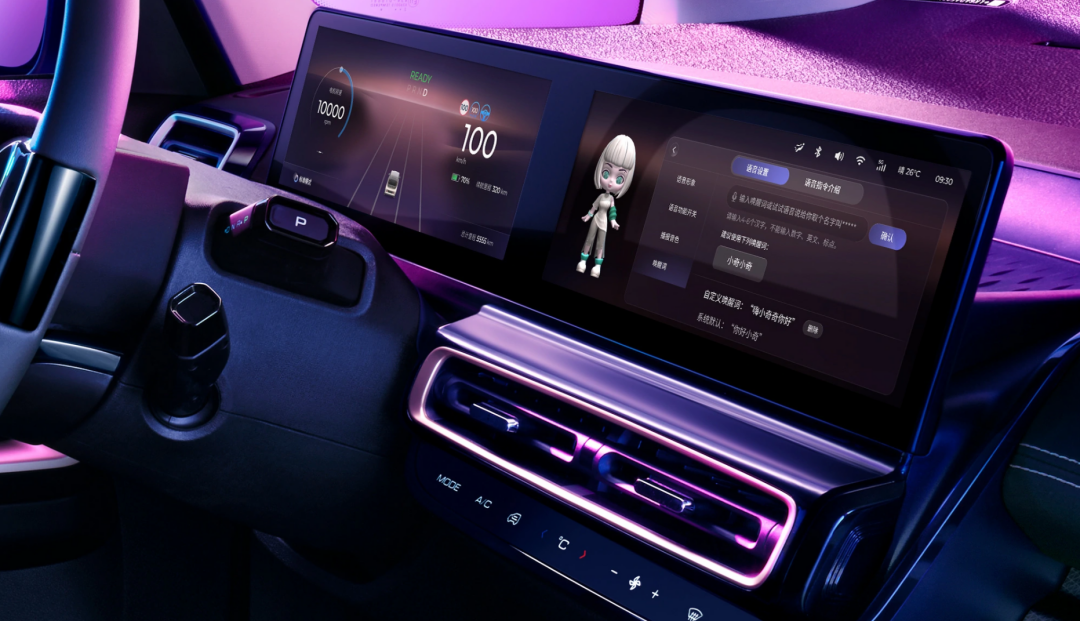
Functions like talking and seeing, frequently used instruction wake-up-free, One-Shot single-sentence multi-instruction, and designated duration continuous conversation… These voice capabilities were considered relatively advanced last year, but this year they are already involved in most of the car models reported at the 2022 Chengdu Auto Show.
Perhaps we can still be amazed at XPeng’s understanding and implementation of intelligent voice, which is leading in the industry. At the same time, we can also see that whether it’s voice self-research, semi-self-research, or directly purchasing ready-made solutions from suppliers, peers have already caught up.
Based on our observation of in-car intelligent voice at the Chengdu Auto Show, we believe that:
-
Only in terms of the abundance of functions, the industry’s average level of in-car intelligent voice is already quite close to several well-known leading companies.
-
Some companies optimize the aspects that affect specific experiences, such as recognition rate, response rate, response speed, and expressiveness, based on the premise that the product framework is relatively mature.
-
Designs that can enhance the perception of texture and atmosphere, such as the linkage between voice interaction and in-car ambient lighting, will appear more frequently when users interact with voice.
-
In terms of the image of the in-car voice assistant, suppliers are exploring the direction of customization and personalization, and matching corresponding operating plans. Meanwhile, it is difficult to use too specific human shape design, and for a long time, humanoid (Xiao P) and abstract (Siri) will still be the main design directions.
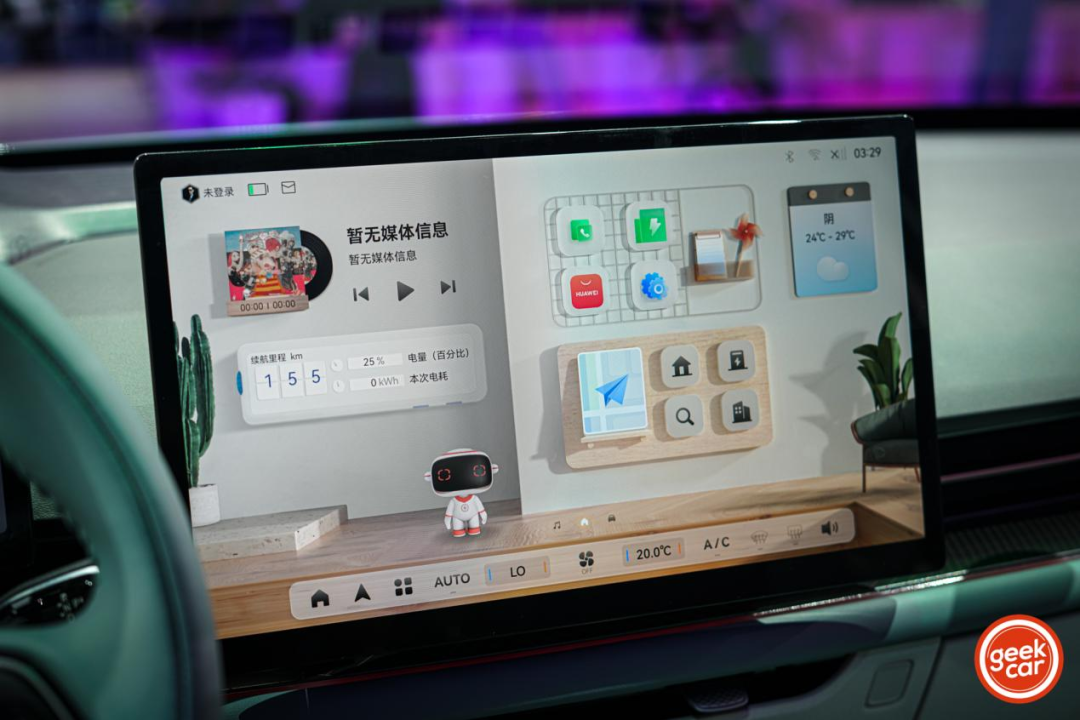
Final Thoughts
After using the AITO WENJIE M5, for a long period of time, I was concerned whether the use of HarmonyOS in the cockpit would erase its individuality and make it similar to the M5’s flat computer-like system. However, it turns out that I have overthought. GeoEV’s new car G6/M6, under the umbrella of Geely, uses a super-electric intelligent cockpit system based on HarmonyOS. Retaining the extremely smooth characteristics of HarmonyOS while adopting a new design language and framework.
On the other hand, with the appearance of new car models and car companies constantly introducing “chip replacement” services, the Qualcomm Snapdragon 8155 chipset fully enters the cockpit and moves towards becoming a standard for new cars. This continues Qualcomm’s inertial positioning in the minds of mobile users: mention a certain SoC chip model, and people will automatically associate it with keywords such as “fast”, “strong”, and “smooth”. Car manufacturers are also happy to make these part of their product strength and emphasize it to users.
Recently, I often see a saying: “Hardware determines the lower limit of the experience, and software determines the upper limit of the experience,” which is second only to the classic “software-defined car”.
As mentioned earlier, the experience brought by hardware such as screens and speakers is more easily perceived by consumers. Speaking of speakers, it seems that the waters run deep.
In the GeekCar “Smart Cockpit Intelligence Bureau” column from last year to this year, there are also some models with logos of world-class acoustic manufacturers on the speaker casing, but their performance is debatable. Clearly, it is custom-made, tuned, tested, and produced by big factories, but the performance is like sitting in a living room watching TV, and the sound comes from directly in front of you, without the spatial and enveloping sensation that should be present in a speaker system with double-digit numbers.
Two months ago, Li Xiang, the CEO of Ideal Motors, reminded people with a sentence on Weibo: “Most high-end car audio brands are just authorized OEMs.” If what Li Xiang said is true, it is also a wakeup call for major audio brands.When talking about this year’s Chengdu auto show with colleagues, one may wonder whether the development of assisted driving has entered a bottleneck period and it would be difficult to break through in the short term. Therefore, auto companies have started to focus on hardware configuration and intelligent experience to enhance the overall user experience.
Expanding further, is it possible that some auto companies are also facing similar growth anxiety as internet companies and mobile phone brands?
On the other hand, compared with the three major state-owned airlines that incurred nearly 50 billion yuan in net losses last year alone, the automotive industry has shown considerable resilience and is making positive strides despite the high level of external uncertainty.
Of course, customers always prefer to spend less money or get better options for the same amount of money, especially for durable goods like cars. Auto companies should not forget that competition is only a means, not an end goal.

This article is a translation by ChatGPT of a Chinese report from 42HOW. If you have any questions about it, please email bd@42how.com.
